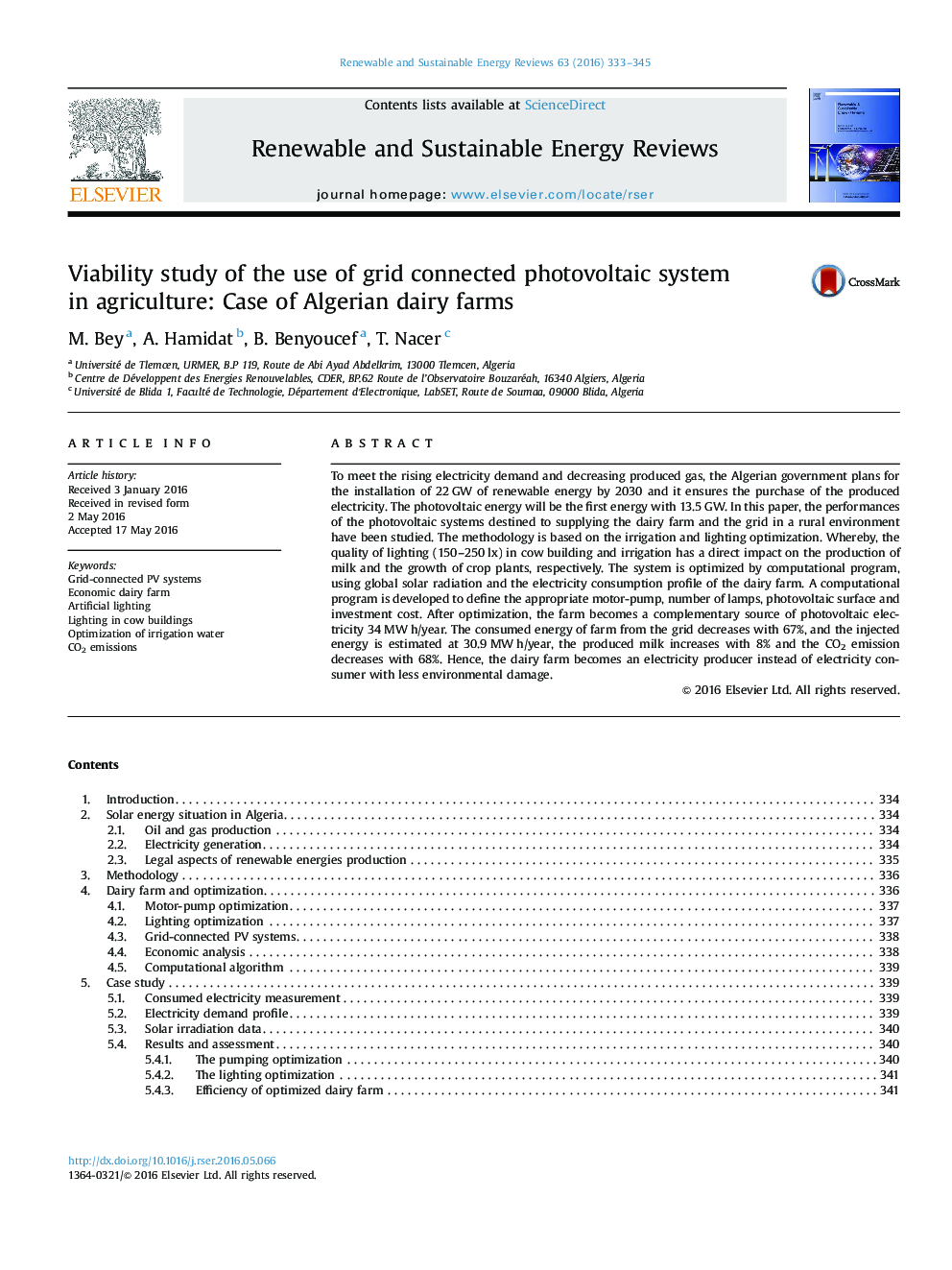| Article ID | Journal | Published Year | Pages | File Type |
|---|---|---|---|---|
| 8113328 | Renewable and Sustainable Energy Reviews | 2016 | 13 Pages |
Abstract
To meet the rising electricity demand and decreasing produced gas, the Algerian government plans for the installation of 22Â GW of renewable energy by 2030 and it ensures the purchase of the produced electricity. The photovoltaic energy will be the first energy with 13.5Â GW. In this paper, the performances of the photovoltaic systems destined to supplying the dairy farm and the grid in a rural environment have been studied. The methodology is based on the irrigation and lighting optimization. Whereby, the quality of lighting (150-250Â lx) in cow building and irrigation has a direct impact on the production of milk and the growth of crop plants, respectively. The system is optimized by computational program, using global solar radiation and the electricity consumption profile of the dairy farm. A computational program is developed to define the appropriate motor-pump, number of lamps, photovoltaic surface and investment cost. After optimization, the farm becomes a complementary source of photovoltaic electricity 34Â MWÂ h/year. The consumed energy of farm from the grid decreases with 67%, and the injected energy is estimated at 30.9Â MWÂ h/year, the produced milk increases with 8% and the CO2 emission decreases with 68%. Hence, the dairy farm becomes an electricity producer instead of electricity consumer with less environmental damage.
Related Topics
Physical Sciences and Engineering
Energy
Renewable Energy, Sustainability and the Environment
Authors
M. Bey, A. Hamidat, B. Benyoucef, T. Nacer,
